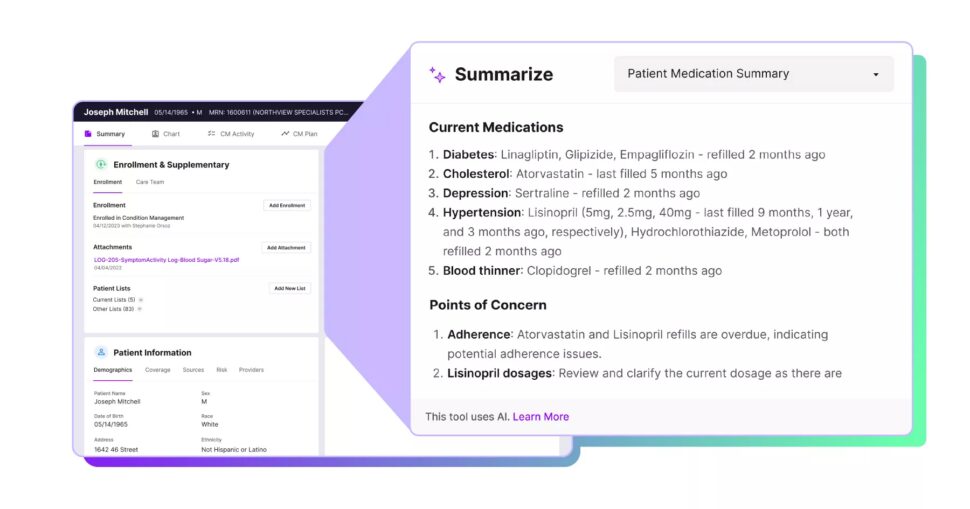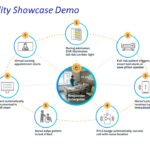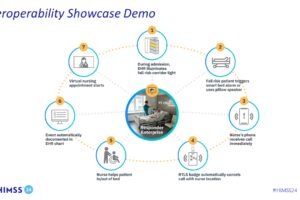The Healthcare IT Today site has been promoting the use of powerful new capabilities in generative AI for clinical applications, notably the automatic generation of doctors’ notes after a patient visit. But there may be even more valuable uses of generative AI in administrative tasks such as billing, resource management, and contract writing.
Akshay Sharma, chief AI officer at Lyric, points out that 15-30% of health care costs in the U.S. are estimated to go to administrative burdens, while another 25-30% are consumed by fraud, waste, and abuse. Applying AI to administrative tasks could reap huge benefits.
And Harman Dhawan, founder and CEO of Bikham, says that eliminating human action from administrative activities is critical to making them scalable. He points out that health care has more trouble adopting new technologies than other fields because of the large sums of money involved, and because of compliance, but that the entry of smaller and newer companies into the field promotes innovation.
David Kereiakes, managing partner at Windham Venture Partners, says that despite the hype around clinical uses, the large clinical organizations with whom he consults are using generative AI a lot more in the back office. They feel that at this point, too much risk and liability surrounds AI use for diagnosis, notes, or other clinical tasks.
Kereiakes says, “Implementing AI into a clinical workflow won’t be an overnight transaction, as it will continue to take time due to the need to gain enough data at scale, trust, and ultimately payment.”
Caen Contee, CEO and co-founder of Wellplaece, anticipates the use of AI to help patients do self-diagnosis.
Nick Stepro, chief product and technology officer of Arcadia, also says, “Generative AI shows promise for clinical decision-making, but that application currently comes with higher risk. In the meantime, leveraging AI for back-office activities is a safer bet, and is an area of low hanging fruit where it’s being used a lot right now.” An example of Arcadia’s diagnostic summary is shown in Figure 1.

Dr. Gauri Puri, head of healthcare and life sciences at WNS, says that AI enables “a comprehensive understanding of patients,” which is crucial for value-based care and the modern focus on “wellness,” as well as to provide the retail-like convenience patients are demanding. Sources of data mentioned by Puri include clinical data, administration and operations, social determinants of health (SDoH), genomics, epigenomics and proteomics.
This article delineates the advantage of generative AI over earlier forms of AI and machine learning. We’ll look at several areas in health care where generative AI is in use, and discuss ways to make it widely available to small clinical organizations with few resources. We’ll also see how different organizations are training their models for maximum accuracy and value.
The Generative AI Advantage
The impacts of generative AI throughout society will be hard to assess for some time because it is so new and has become the darling of computer science so fast. Stepro describes the pace of change as “extreme.”
It’s hard to remember that ChatGPT was launched only near the end of 2022. In recent news, Google released Gemini, incorporating generative AI into a voice-enabled chatbot. One history credits Joseph Weizenbaum, creator of the classic Eliza program in the 1960s, for inventing the large language model (LLM).
But the key element of generative AI, the transform or transformer, was first proposed in a 2017 paper and only recently has supplemented the more traditional convolutional neural networks (CNNs) and recurrent neural networks (RNNs).
Traditional automation takes simple, linear tasks off of the hands of busy staff. Machine learning can go much further, uncovering useful trends that were previously unnoticed, and doing predictive analytics such as risk stratification of patients. But what can office staff get from generative AI?
While older forms of AI could produce simple numbers or charts, generative AI can produce complete documents. Although these documents need to be checked carefully by humans, the documents are often of higher quality than humans can produce on their own. First, they can adhere strictly to formats required by the recipient (such as for prior authorizations). Secondly, they are likely to capture obscure facts in electronic records that humans can easily overlook.
Stepro points out, “Humans are complex, and healthcare generates massive amounts of data, especially for patients with comorbidities. This increases the risk that important information could slip through the cracks. Generative AI, excelling in its ability to comb through the details, can help bring important insights buried in long patient histories to the surface. It can also help ensure that social determinants of health and other barriers to care aren’t missed, and that important information is considered in care plans.”
Dr. Rowland Illing, chief medical officer and director of global healthcare and non-profits at Amazon Web Services (AWS), says that traditional tools such as extract, transform, load (ETL) and intelligent document processing (IDP) cull data. “Now, organizations can use LLMs to normalize and transform the information to match the downstream databases where they want to store it. And instead of just asking very specific extractive questions, they’re able to do more complex tasks, such as asking the models to summarize the documents in a short paragraph or perform complex reasoning tasks on top of the data.”
Jean-Claude Saghbini, President of the Lumeris Value-Based Care Enablement business, identifies a “common archetype” for the use of generative AI: “To alter what had historically been a search into creating a direct path from a question to the applicable answer.”
Joel Ray, chief clinical advisor at Laudio and former chief nursing officer at UNC Rex Healthcare, emphasizes the importance of AI to simplify and reduce workload for frontline leaders at health systems, who play a vital role in ensuring high-quality care and stabilizing the broader frontline workforce. Currently, these leaders are overwhelmed by administrative burdens and growing team sizes. “AI and automation, focused on their ways of working, not only help boost their personal well-being and work satisfaction but also position them to focus more attention on engaging with and supporting their team members—thus helping to reduce burnout and retain staff at all levels.”
Upcoming articles in this series look at some of the many use cases that are taking place now, or might soon be feasible.













